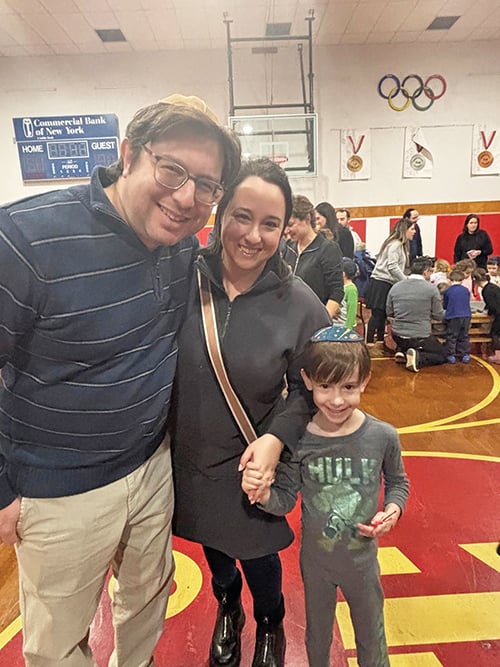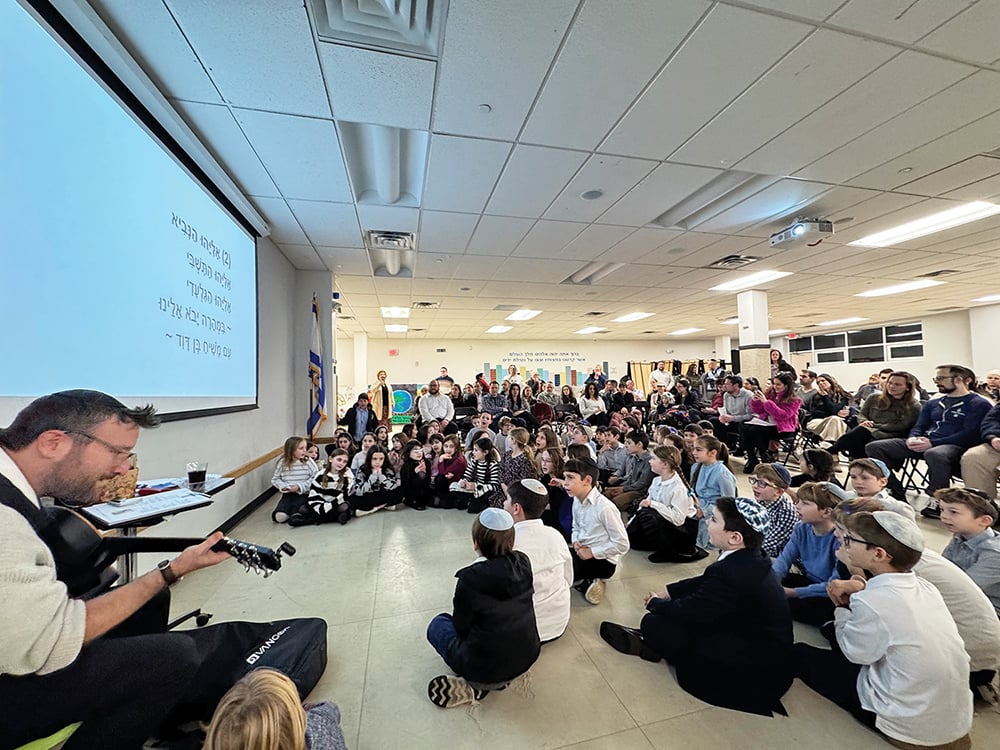


As mentioned previously, the purpose of this article is not to go into the underlying reasons of a minhag, but to compare one against the other. I also want to stress again at this point that although I describe one or the other minhag, I cannot and will not be a judge as to which minhag is correct or better one. That decision is made by the rabbi and the shul’s officers of each community.
I live in Bergen County and there are shuls that require each person who has an aliyah or mitzvah to wear a tallit even for Mincha. There are other shuls where that requirement does not exist and only the ba’al keri’a wears a tallit.
The wearing of a tallit serves as an expression of dignity and respect and a sense of reverence and awe, even during the times that the wearing of a tallit is not required, such as during mincha services or even during Arvit prayer when the mitzvah of tzitzit does not apply at all.
This was the accepted practice in Lithuania, Central Europe and Germany until recent generations, while some chassidic communities ceased requiring the chazan to wear a tallit during Mincha and Arvit services. The wearing of a tallit is required not only of the chazan but anyone involved with the ark or the Torah even if he only carries the Torah outside a service. Also, the wearing of a tallit is required of the rabbi when delivering a drasha and when officiating at a wedding.
The wearing of the tallit when reciting the orphan’s Kaddish is an ancient practice mentioned by halachic authorities, but in later generations was followed only in Germany and neighboring countries. Many communities would have a supply of tallitot for those reciting Kaddish in order to ensure the observance of this custom.
It is the accepted custom that the one called to the Torah at Mincha services should continue wearing his tallit until the end of the Kedusha as a sign of respect for the prayer service.
The question of whether a bracha is said is a controversy that has not been resolved.
Now that I have outlined what used to be the custom, and is followed by some and not by others, let me tell you how it affected me. As long as I lived in Washington Heights, the wearing of a tallit at the required times and occasions was a given.
When I moved to New Jersey I had no problem fitting in when attending a shul where the wearing of a tallit was required for the above-mentioned occasions. Attending a shul where there was no requirement for wearing a tallit for an aliyah or mitzvah at Shabbat Mincha presented a problem when I was called upon.
Above I have related several instances for which I felt there was no need for me to drop the minhag that I was brought up in, since it affected no one, and the difference was not even noticeable by anyone else. Here it would have been easy to fit in with others and not wear a tallit when others also do not do so. But this was different from those mentioned above. Those above-mentioned minhagim were differences between me and other people. But the wearing of a tallit was between Hashem and me, since not wearing a tallit when your minhag was to wear a tallit would show a lack of respect and dignity to Hashem. And this I was not going to do, even if my action, different from the local custom, would be embarrassing.
The first time I was asked to come up to the bimah I grabbed a tallit, only to be told by the gabbai that I do not need a tallit. I responded, “But I may wear one?” to which the Gabbai with a somewhat embarrassed smile replied to the affirmative. After completion I went back to my seat, with numerous people looking at me, and some motioning that I had forgotten to take off my tallit. I ignored everyone and took off my tallit after the Kedusha and returned the tallit to the shulchan. When asked about my action I explained that I followed my minhag.
I urge every one of my readers: whatever your minhag is from your parents’ home—follow it. Follow it, if at all possible, under the circumstances that you find yourself.
Finally, I want to thank Rabbi Binyomin Shlomo Hamburger of Machon Moreshes Ashkenaz in Bnei Brak for making available to me his book “Shorshei Minhag Ashkenaz,” from which most of the information in the above article was taken.
Norbert Strauss is a Teaneck resident and Englewood Hospital volunteer.













